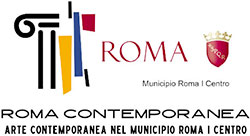Galleria Anna Marra is pleased to reopen its doors by presenting Viewing Room # 1. Human / Nature with works by Faig Ahmed (Sumqayit, Azerbaijan 1982), Paula Cortazar (Monterrey, Mexico 1991) and Maria Elisabetta Novello (Vicenza, Italy 1974); three international artists who work with everyday elements, generating new visions on secular cultures and on the link between Man and Nature.
Faig Ahmed experiments with traditional materials and colors, such as the rug weavings in Azerbaijan or Indian embroidery. He is well known for his conceptual works that utilize traditional decorative craft and the visual language of carpets, to translate it into contemporary sculptural works of art. Ahmed is among a new wave of artists exploring crafts in innovative ways to produce works that break away from conventions associated with the craft by bringing it into an art historical context.
Paula Cortazar explores the territories observing how natural elements - water, wind, time, drought - create energy wrinkles in places and constantly modify them. The artist works on the energy present in nature and then encodes it and engraves it on the surfaces of rocks, wood or paper. The sign / imprint in his works often recalls the vital flows that flow in our body, creating a bridge, a common language between human being and the environment. As can be seen from the two sculptures on display, both made of alabaster, Cortazar's work is mainly based on the research of drawing in nature. It is the tool that allows the artist to highlight and interpret the hidden graphic code of a tree or a river. This repetition of lines is for her the visual proof that every element that surrounds us is part of a whole. In this way, the drawing functions as a personal translation of a much more complex language.
Maria Elisabetta Novello's personal research is on memory and the passage of time. He proceeds with small changes, working on absence. The artist runs and travels through places, experiences spaces and their transformations, collecting dust along his path and testimonies of the present, as well as those of the past. In this cycle entitled INSTANTS, the artist chooses to investigate some specific places, more or less delimited, and collects the deposited dust, then conserving it between glass plates that recall, in their specific shape and materials, large glass laboratory, with the samples stored in them ready to be analyzed under the microscope.Novello's choice to use non-canonical materials, even inconsistent and volatile, difficult to work with and fix, such as ash and dust, stimulates reflection on the perspective of knowledge, on the dualism between material and immaterial, tangible and intangible, individual and cosmos.



